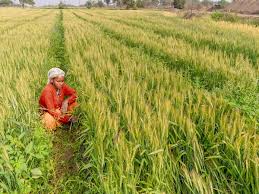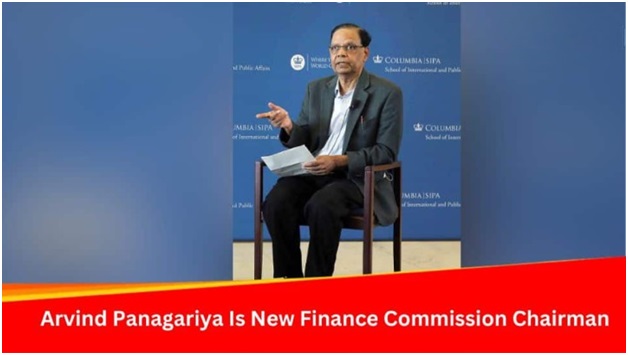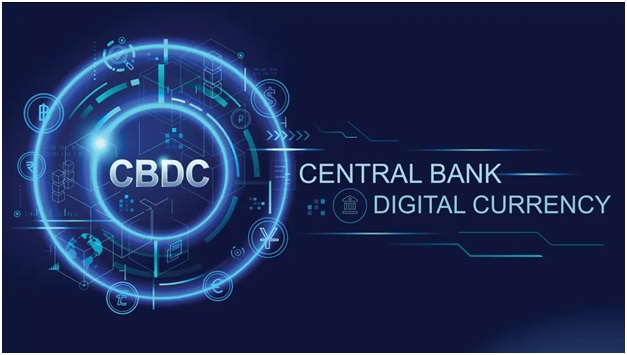Financing Sustainable Agriculture: Insights from the RBI

- 18 Sep 2024
Context
At the International Research Conference, the Deputy Governor of the Reserve Bank of India (RBI) addressed the crucial topic of financing sustainable agriculture, emphasizing the need for effective solutions.
What is Sustainable Agriculture?
Sustainable agriculture involves farming practices that meet current food demands while conserving resources for future generations. This approach aims to:
- Protect the environment
- Reduce reliance on chemical inputs
- Efficiently use water and land
The goal is to balance productivity, environmental health, and socio-economic equity.
Benefits of Sustainable Agriculture
- Environmental Conservation: Promotes biodiversity, reduces soil degradation, and conserves water.
- Economic Stability: Lowers dependence on costly chemical inputs, improving farmers’ profitability.
- Improved Food Security: Enhances soil health and crop diversity, ensuring resilience against climate change.
- Social Equity: Farmer Producer Organizations (FPOs) empower small and marginal farmers by providing access to technology, markets, and financial resources, enhancing their bargaining power.
Challenges Facing Sustainable Agriculture
- Low Productivity: Small, fragmented landholdings hinder investment in sustainable practices and mechanization.
- Dependence on Rainfall: Approximately 60% of Indian agriculture is rain-fed, making farmers vulnerable to climate variability.
- Price Volatility: Fluctuating prices force farmers to sell at low prices during peak harvests, while limited processing capacity leads to post-harvest losses.
- Access to Finance: Small farmers struggle to obtain credit, as the formal banking system often favors larger agribusinesses.
Initiatives for Sustainable Agriculture
- Farmer Producer Organizations (FPOs): Over 24,000 FPOs formed by March 2023 enhance farmers’ access to resources and markets.
- Warehouse Receipt Financing: This model allows farmers to store produce and sell when prices are favorable, stabilizing commodity prices.
- Priority Sector Lending (PSL): RBI regulations enable loans up to ?2 crore for agricultural activities, with higher limits for FPOs involved in assured marketing.
- Climate-Smart Agriculture (CSA): India is adopting practices such as drought-resistant crops and advanced water management.
- Technology Integration and Mechanization: Initiatives like the “Per Drop More Crop” scheme promote efficient water use, while Custom Hiring Centres (CHCs) enhance mechanization, reducing labor costs.
Arvind Panagariya to Head 16th Finance Commission (ET)

- 01 Jan 2024
Why is it in the News?
The government appointed former NITI Aayog Vice-Chairman Arvind Panagariya Chairman of the 16th Finance Commission, which will recommend the tax revenue sharing formula between the Centre and States for the five-year period beginning April 2026.
Constitution of the 16th Finance Commission:
- The Government of India, with the approval of the President of India, has constituted the 16th Finance Commission, in pursuance to Article 280(1) of the Constitution.
- Dr Arvind Panagariya, former Vice-Chairman, of NITI Aayog, and Professor, at Columbia University will be the Chairman.
- Members of the 16th Finance Commission would be notified separately.
- Shri Ritvik Ranjanam Pandey has been appointed as Secretary to the Commission.
- The 16th Finance Commission shall make recommendations as to the following matters, namely:
- The distribution between the Union and the States of the net proceeds of taxes which are to be, or maybe, divided between them under Chapter I, Part XII of the Constitution and the allocation between the States of the respective shares of such proceeds;
- The principles which should govern the grants-in-aid of the revenues of the States out of the Consolidated Fund of India and the sums to be paid to the States by way of grants-in-aid of their revenues under Article 275 of the Constitution for the purposes other than those specified in the provisos to clause (1) of that article; and
- The measures needed to augment the Consolidated Fund of a State to supplement the resources of the Panchayats and Municipalities in the State on the basis of the recommendations made by the Finance Commission of the State.
- The 16th Finance Commission may review the present arrangements on financing Disaster Management initiatives, with reference to the funds constituted under the Disaster Management Act, 2005 (53 of 2005), and make appropriate recommendations thereon.
- The 16th Finance Commission has been requested to make its report available by the 31st day of October 2025 covering a period of five years commencing on the 1st day of April 2026.
15h Finance Commission Recommendations (Effective from 2021 to 2026):
- Tax Proceeds Allocation: The Commission advocates for an equitable distribution of tax proceeds between the central government and states, fostering a well-balanced fiscal sharing mechanism.
- Assessment of GST Impact: The FC underscores the importance of analyzing the impact of the Goods and Services Tax (GST) on the economy.
- This evaluation aims to comprehend the implications of GST implementation across various sectors.
- Performance-Linked Incentives: Proposed incentives are tied to states' efforts in addressing key issues like population control, ease of doing business, and other pertinent factors.
- Financial Assistance to States: The FC suggests the provision of revenue deficit grants, grants to local bodies, and disaster management grants to states.
- These grants are intended to bolster the financial requirements of the states and promote effective governance.
Proposed Recommendations for the 16th Finance Commission:
- Review of the 2018 Amendment to the Centre’s FRBM: This proposal aligns with the suggestion made by the 15th Finance Commission.
- In the fiscal year 2020-21, the combined debt-GDP ratio of the central and state governments reached 89.8%.
- While these figures have started declining, they remain significantly higher than the corresponding Fiscal Responsibility and Budget Management (FRBM) norms of 40% and 20% established in the 2018 amendment.
- With the Centre’s fiscal deficit at 9.2% of GDP and that of states at 4.1% in 2020-21, it becomes imperative to re-examine the 2018 amendment to the Centre’s FRBM, especially considering the deviations from established norms.
- Limiting Freebies: Some state governments exhibit relatively higher debt and fiscal deficit figures compared to their Gross State Domestic Products (GSDPs).
- Two primary concerns arise in this context: the widespread distribution of subsidies and the reintroduction of the previous pension scheme in states without a clear identification of funding sources and the resultant fiscal burdens.
- Often, these subsidies are financed by increasing the fiscal deficit. While advocating for safety nets for the poor is essential in a country facing economic challenges, a prudent approach is crucial.
- The next Finance Commission should provide explicit guidelines to ensure long-term fiscal sustainability and responsible spending on gratuities.
Freebies Must Be Restricted Through Reform:
- An innovative approach to address this issue is the establishment of a loan council, as suggested by the 12th Finance Commission.
- This independent body would monitor the scale and profiles of loans taken by both the central and state governments.
- The 16th Finance Commission should thoroughly scrutinize non-merit subsidies.
- It is crucial for the Finance Commission to enforce strict adherence to fiscal deficit limits by states.
- Incentives should be provided for states maintaining fiscal discipline, potentially integrating fiscal performance as a criterion in horizontal distribution.
- Conversely, measures should be imposed on states exceeding fiscal deficit limits, with appropriate actions taken on their borrowing capacities.
Conclusion
During the pre-reform era, Finance Commission recommendations held less significance, given alternative methods the Centre employed to compensate states. However, with the abolition of the Planning Commission, the Finance Commission has emerged as the primary architect of India's fiscal federalism, shouldering substantial responsibility and wielding significant influence. The recommendations provided by the 16th Finance Commission will be critical as India progresses towards becoming the world's third-largest economy.
Finance Commission:
- The Finance Commission is a constitutional body responsible for providing recommendations on the distribution of tax revenues among the Union and the States, as well as among the States themselves.
- Composition: Constituted by the President under Article 280 of the Constitution, the Finance Commission is formed at the end of every fifth year or earlier, as deemed necessary.
- Parliament has the authority to establish the requisite qualifications for commission members and determine the selection process, as enacted by The Finance Commission (Miscellaneous Provisions) Act, 1951.
- Mandate: The Commission is tasked with making recommendations to the President on various aspects, including the distribution of net tax proceeds between the Union and the States, principles governing grants-in-aid to State revenues, measures to augment a State's Consolidated Fund, and other matters referred to it by the President in the interest of sound finance.
- Composition: The Finance Commission comprises a Chairman and four other members appointed by the President.
- The Chairman is selected from individuals with experience in public affairs, while the other members may have qualifications related to judiciary, financial expertise, administration, or economics.
- Tenure: Each member serves a term specified by the President and is eligible for reappointment.
- Independence: The recommendations of the Finance Commission, although significant, are not binding on the government.
SBI allows interoperability of UPI and Central Bank Digital Currency (CBDC) (The Economic Times)

- 06 Sep 2023
Why in the News?
The State Bank of India has announced the implementation of UPI interoperability in its Digital Rupee (eRupee) also called Central Bank Digital Currency (CBDC).
Context:
- Banks are making it possible for Unified Payments Interface's (UPI) Quick Response (QR) codes to work seamlessly with their central bank digital currency (CBDC) or e? applications.
- Interoperability means that the payment system can function smoothly alongside other payment systems.
- It enables system providers and participants from different systems to conduct, process, and settle payment transactions across systems without the need for involvement in multiple systems.
- As a result of this interoperability, users of the retail digital rupee will be able to make transactions by scanning any UPI QR code at a merchant's establishment.
- Additionally, merchants can now accept digital rupee payments through their existing UPI QR codes.
- This integration of UPI and CBDC is part of the Reserve Bank of India's (RBI) ongoing pilot project to promote the adoption of the retail digital rupee (e?-R).
What does UPI QR code-CBDC interoperability mean?
- Interoperability between UPI and the digital rupee ensures that all UPI QR codes can now be used seamlessly with CBDC apps.
- Initially, during the launch of the pilot for the retail digital rupee, e?-R users were required to scan a specific QR code for their transactions.
- However, thanks to the interoperability of these systems, payments can now be initiated using a single QR code.
- In this setup, the e? is stored in a digital wallet, which is connected to the customer's existing savings bank account, while UPI is directly linked to the customer's account for payments.
How will interoperability contribute to increased CBDC adoption?
- Interoperability between CBDC and UPI is poised to drive the adoption of the digital rupee, especially considering UPI's widespread use.
- Currently, UPI is a highly popular payment method, with more than 70 mobile apps and over 50 million merchants accepting UPI payments.
- In July, the RBI Deputy Governor reported that there were 1.3 million customers and 0.3 million merchants using the retail digital rupee.
- However, the daily e?-R transactions in July ranged from 5,000 to 10,000, indicating room for growth.
- The seamless integration of CBDC with UPI is expected to boost the acceptance and utilization of digital currencies in everyday transactions.
How will this benefit customers and merchants?
- The UPI and CBDC interoperability will streamline transactions for both customers and merchants, eliminating the need to switch between multiple digital platforms.
- Digital rupee users can now effortlessly make payments for everyday essentials like groceries and medications by scanning any UPI QR code at any merchant's store.
- Merchants will no longer need a separate QR code to accept digital rupee payments; they can seamlessly receive CBDC payments through their existing QR code setup.
- If the merchant has a CBDC account, the payment will be settled in their CBDC wallet. For merchants without a CBDC account, there will be an option to process payments using UPI.
What is a QR code?
- A QR code, short for Quick Response code, is a pattern of black squares arranged in a square grid against a white background, designed to be read by imaging devices like cameras.
- These codes contain information related to the item they are associated with. QR codes serve as a convenient and contactless method for various purposes, including enabling businesses to receive payments directly into their bank accounts from customers.
What is Central Bank Digital Currency (CBDC)?
- CBDC stands for Central Bank Digital Currency, which is a digital form of legal tender issued by a central bank.
- In the case of India, the Reserve Bank of India has introduced the digital rupee, known as e-Rupee.
- This digital currency holds the same value as traditional fiat currency and can be exchanged on a one-to-one basis.
- The primary distinction is its digital format.
- The launch of the digital rupee is divided into two main categories: general purpose (retail) and wholesale.
- This categorization is based on how the digital rupee is used and its accessibility levels.
- Starting from November 1, 2022, the RBI initiated its first pilot project for the use of the digital rupee in the wholesale market, specifically for secondary trade in government securities (G-secs).
- Wholesale CBDC has the potential to enhance the efficiency and security of settlement systems for financial transactions conducted by banks, particularly in the government securities segment, inter-bank market, and capital market.
- This transformation is achieved by reducing operational costs, improving collateral usage, and enhancing liquidity management.
- Subsequently, from December 1, 2022, the pilot for the retail digital rupee (e-R) was launched.
- Essentially, the retail e-rupee serves as an electronic substitute for physical cash and is primarily intended for everyday retail transactions.
- It is accessible to all, including the private sector, non-financial consumers, and businesses.
- Distribution of the retail digital rupee will be facilitated through intermediaries, such as banks.
- It does not accrue any interest and can be converted into other forms of money, such as bank deposits.
Mains Question:
- Discuss the potential advantages and disadvantages of implementing a Central Bank Digital Currency (CBDC) like the digital rupee (e-R) in India, and elucidate its possible implications on the broader financial ecosystem? (10M)
